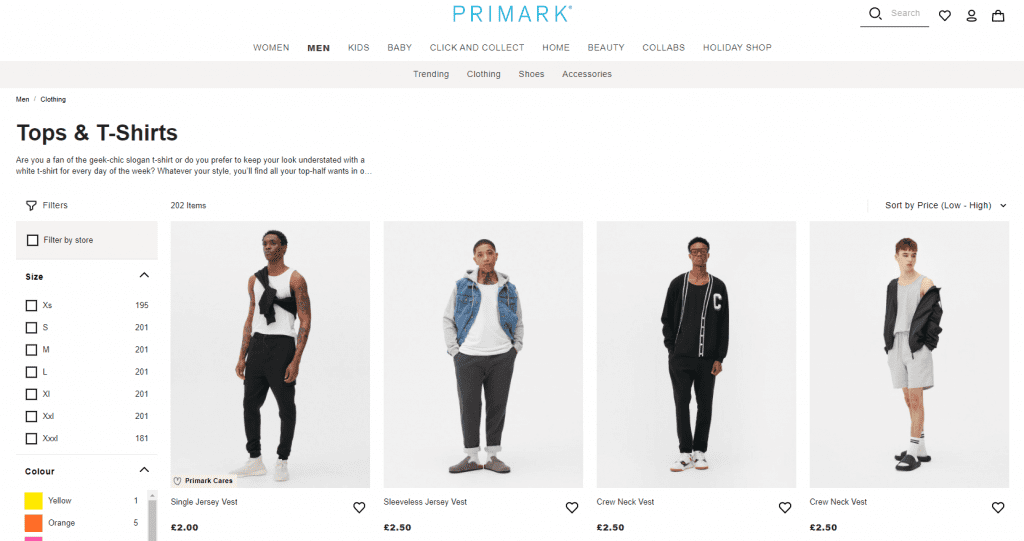Category:
Podcast
Series:
#2
Episode:
#2
Date:
January 2023
Stream on Spotify
Retail is set to be challenging in 2023.
After a rocky 2022, the retail landscape is set to be just as challenging in 2023.
The UK is facing a recession, combined with rising interest rates and the effects of ongoing strike action. Data science and AI can help retailers navigate the obstacles ahead.
In the second of this two-part podcast series, we’re examining three further trends impacting retailers in 2023.
1) The rise of the circular economy.
Sustainability is one of the key trends impacting retailers. There’s no doubt we’re going to hear more and more about building a circular economy over the coming months and years.
But first of all; a definition. A circular economy maximises the value of products, services and systems, and reduces waste. It relies on reusing, repairing, recycling and remanufacturing – in direct contrast with a ‘linear’ economy.
Let’s take the world of fashion as an example. According to Fast Company, the production of clothing doubled between 2000 and 2014. At the same time, garment purchases per capita rose by 60%. However, in the UK alone, 350,000 tonnes of unwanted clothing goes to landfill every year, rather than getting recycled or remanufactured.
Stats like these underline the scale of the problem retail is facing – and the need for change.
The circular economy in action.
We’re already seeing retailers start to pave the way to a circular economy.
Modern Milkman is a great case study. Their mission is to reject ‘convenience at any cost’; conserve natural resources; and eliminate waste and pollution. For this reason, their business focuses on eliminating single use plastics by using modern tech to create a waste-free circular supply chain. They’ve already prevented 66,434,322 plastic bottles from going to landfill (as at 31/01/2023).
Meanwhile, several retailers are also offering clothing rental – rather than outright ownership. For example, John Lewis is offering dresses to rent from around £22.00 with a £14.00 delivery and cleaning fee, depending on the full price. This is clearly more affordable and sustainable than outright ownership – especially for specific need states, like formal wear.
We’ve also seen rentable electric scooters permeate cities across the globe in recent years. Brands like TIER and Lime are leading the way, offering an easy and cheap method of transport – all managed by an app. There’s a clear opportunity to take this model and apply it to the car rental industry, with electric cars hooked up to charging points in various city locations.
Fast fashion is consuming the earth – literally.
There are plenty of scenarios where a circular economy could – and already does – work. However, for markets with planned obsolescence (i.e. products with a limited lifespan), it’s more difficult to see its application. For example – the consumable goods, fast fashion and tech worlds.
Let’s take fast fashion as an example. Fast fashion retailers design cheap clothing to be worn once or twice then thrown away. This model is easy and accessible for consumers but doesn’t lend itself to rental – who’d rent an item of clothing that originally cost less than a pint in the pub? For this reason, fast fashion retailers have a responsibility to develop sustainability and recycling programmes, to prevent excessive waste and contribute to the circular economy. Primark has already taken a step in this direction with its Primark Cares pledge.
Imagine a world of reusing and renting.
Let’s imagine the future circular economy. A world of reusing and renting.
Retailers will have less control over supply chains and the products they actually stock. They won’t be managing buy towards demand – instead they’ll be making decisions around getting the best sell through and margins on the products available.
This is where data science and AI can help match products and pricing to demand. There’s scope for airline pricing models – retailers could drop the prices of high-volume products with lower demand, but raise the prices of scarcer, desirable items. Leveraging data to understand demand and consumers’ willingness to pay will be key.
2) What’s next for department stores?
The outlook is gloomy for department stores – and it has been for some time, even before the pandemic hit.
Debenhams struggled for a few years before finally closing its remaining 160 stores in spring 2021. The online brand has survived under new owners Boohoo.
John Lewis closed 16 stores during the COVID-19 pandemic, including major cities like Birmingham and Sheffield. The brand has since retired its famous “never knowingly undersold” price pledge in 2022; saying it’s lost relevance in a time of tough competition from online retailers.
Meanwhile, Fenwick is closing its New Bond Street department store in 2024, after 130 years.
Innovation isn’t optional.
Department stores are fighting – for footfall, now that consumers are increasingly working from home, and for market share, now that savvy customers can easily research prices online.
The way forward is three-fold:
- It all comes back to data. Department stores need to leverage data to create an efficient supply chain – and to better compete on price. For example, what’s the optimum product range and volume? If products aren’t selling, what’s the best price to ensure clear through and prevent warehousing issues? How can you make sure the right range of products and sizes are in each store? Can you analyse consumer behaviour and profiles of people living in the local area around each store, to provide a more compelling product assortment?
- Creating innovative spaces. In a retail world that’s increasingly moving online, how can department stores encourage footfall? How can they create a ‘fashion experience’? Is it in-store entertainment? Cafes, restaurants, and galleries? Spaces for kids to play? Innovations around trying on clothing, like VR (virtual reality)?
- Encouraging customer loyalty. There’s a real opportunity for department stores to leverage customer loyalty schemes and apps. What can they genuinely give back to customers, to give them a reason to engage? Is there potential for rewarding customers for the number of times they visit a store?
3) Is it dark days for Black Friday?
Although Black Friday has been popular in the US for a long time, the UK didn’t embrace it until 2010. It all started when – yep, you guessed it – Amazon offered their customers Black Friday savings. Since then, it’s grown in popularity to become a fixed date on the retail calendar – and it’s another of the key trends impacting retailers.
But is it losing its appeal? In the UK, Black Friday footfall in 2022 was 22% lower than in 2019, before the pandemic. Meanwhile, sales volumes dropped by 0.4% in November – despite Black Friday deals.
Some companies are actively shunning the event. Last year, IKEA opted to enhance its buy back and resell scheme as part of its ‘Green Friday’ initiative.
Retaining or regaining consumers’ trust?
Black Friday was interesting and exciting in the early days, when retailers were offering deep discounts on genuine deals.
However, retailers need to be careful. In 2021, Which? analysed 200 offers and found 98% were either cheaper or the same price at other points during the year. Retaining (or regaining) consumers’ trust must be key.
When planning for Black Friday, retailers should leverage data to maximise margins across the whole range. It’s essential to have a real-time view of the supply chain and corresponding demand. For example:
- If you’re selling through stock at a higher rate, you need to protect margin lines that are in demand, especially if stock is low.
- At the opposite end of the scale – if you’ve got a warehousing issue caused by too much stock, you need to clear through with compelling deals and promotions.
The two areas work hand-in-hand, supported by data, as deep discounts are balanced out by the margins of protected lines.
Are you truly leveraging data science and AI for retail success? Get in touch to discuss how we can help with the trends impacting retailers, from demand forecasting to intelligent pricing, promotions and assortment decisions.




